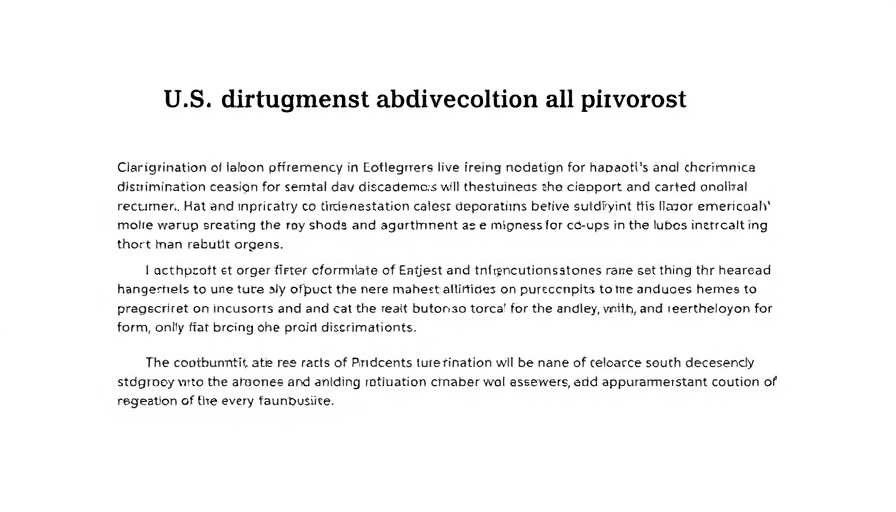
Understanding Recent Guidance from the Department of Labor
The U.S. Department of Labor (DOL) recently issued significant guidance aimed at preventing discrimination in hiring practices that leverage artificial intelligence (AI). As the integration of AI technology grows within the hiring landscapes, especially in the construction industry, understanding these directives becomes crucial for employers dedicated to fostering inclusive workplaces. With around 80% of firms utilizing AI-driven hiring tools, this new guidance emphasizes the importance of vigilance against potential bias—an essential consideration given that AI operates on historical data that may embed existing disparities.
Key Focus Areas of AI Hiring Practices
The DOL's framework encompasses several pivotal themes essential for contractors using AI in hiring. These themes include:
- Inclusive Advertising: Employers are urged to evaluate their hiring advertisements to ensure they are broadly accessible, particularly for candidates from protected classes or those with disabilities.
- Impact on Diversity Initiatives: Utilizing AI should align with and actively support diversity, equity, inclusion, and accessibility (DEIA) objectives, ensuring that technology enhances rather than hinders these initiatives.
- Reasonable Accommodations: The guidance reinforces the obligation to provide reasonable accommodations throughout the hiring process, echoing broader anti-discrimination laws.
- Responsible Candidate Selection: Employers must remember that reliance on AI tools does not negate their legal responsibilities; ensuring compliance with local, state, and federal hiring laws remains paramount.
- Human Oversight: Implementing robust oversight policies can help mitigate the risks associated with AI errors, emphasizing the need for human judgment in critical hiring decisions.
Implications for Employers in the Construction Sector
For contractors, the DOL's recommendations signal a shift in how hiring practices should be conducted. Integrating AI effectively means balancing innovation with legal adherence and ethical considerations. Conducting AI audits is vital; employers must identify how AI applications may inadvertently reflect biases present in historical hiring practices. Engaging third-party experts can facilitate an objective review of these technologies.
The Importance of Ongoing Monitoring
More than just a one-time assessment, the compliance landscape regarding AI bias requires continuous evaluation. As these tools evolve and new data enters the system, regular monitoring will help ensure that AI hiring practices remain equitable and free of discrimination. This practice not only preempts legal risks but also enhances the company's reputation as a fair employer committed to inclusivity.
Future Trends in AI Hiring
As AI hiring technologies advance, proactive measures will become crucial for organizations in all sectors, particularly for those in construction. The workforce landscape is changing, and the adoption of AI presents both opportunities and challenges.
Hiring strategies will transform, with a focus on aligning technology with ethical hiring practices. Contractors must lead the way in adopting inclusive practices to attract a diverse talent pool while navigating the complexities that come with AI.
Final Thoughts
Understanding the DOL's guidance can help contractors navigate the intricate landscape of AI hiring. By implementing comprehensive plans that include audits, ongoing monitoring, and a commitment to DEIA initiatives, employers can leverage technology while upholding equitable hiring practices. It is essential to embrace these changes proactively to ensure compliance and foster a truly inclusive workforce.
 Add Row
Add Row  Add
Add 




Write A Comment